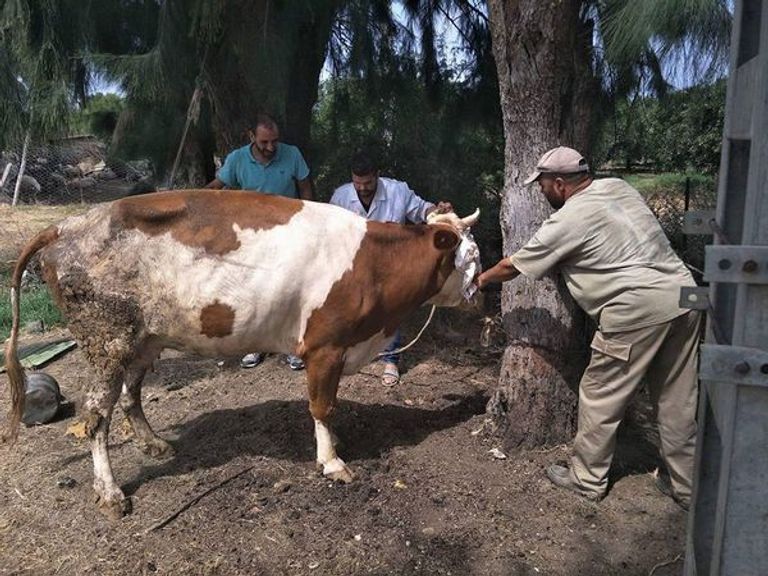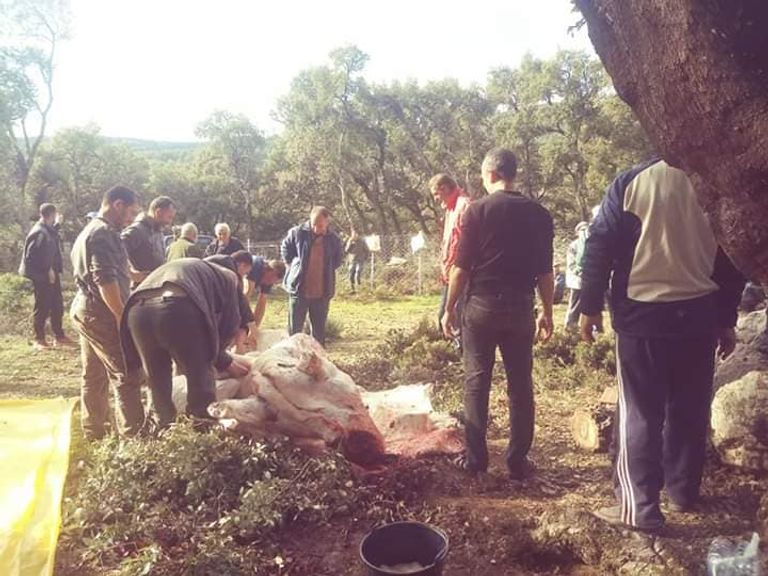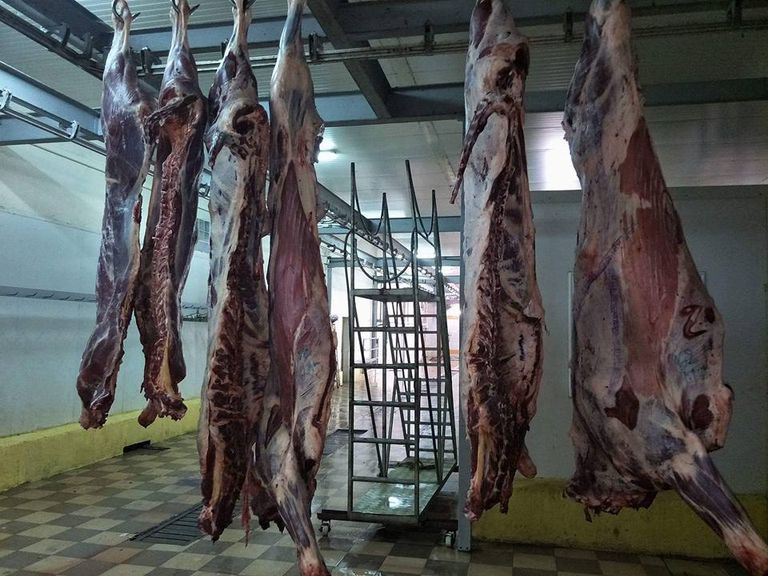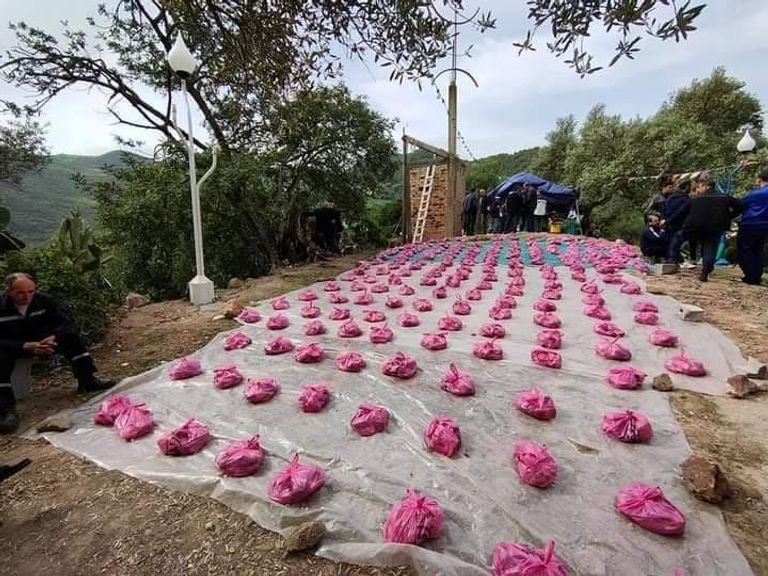BY: Dr. Hana Saada
ALGIERS- Algeria, a country steeped in rich history and cultural heritage, continues to cherish and preserve its traditions, especially as the holy month of Ramadan approaches. Among these enduring customs is “Laouziaa” or “Thimshert,” as known in the Amazigh language, a longstanding social practice that embodies the values of solidarity, mutual support, and communal cooperation that have characterized Algerians throughout the ages.
Preserving Ancient Customs:
“Laouziaa” is deeply rooted in the social fabric of Algerian communities, particularly in the Kabylie region in northeastern Algeria. Despite the passage of time, this tradition remains steadfast, especially during religious occasions, such as the advent of the sacred month of Ramadan, Eid al-Fitr, the Prophet Muhammad’s birthday, and sometimes during the celebration of the Amazigh New Year, which falls on January 12th of each year.
This ritual is practiced in different provinces, such as Tizi Ouzou, Béjaïa, Sétif, and Bordj Bou Arréridj. It is also prevalent in the Aurès region in the east of the country and “Beni M’zab” in the south.
During this tradition, the dignitaries and elders of the community collect a sum of money, with everyone participating by contributing a predetermined amount per family. This money is then used to purchase one or more cows or bulls (typically priced at around $1000 each on average). The animals are slaughtered, and their meat is distributed equally among all families, with additional portions allocated to poorer families who couldn’t contribute financially. Each portion of meat is called a “Sahma.”



The process begins with registering those interested in participating, usually all the families in the village. Based on the list, the number of animals to be slaughtered and the subscription amount for each family are determined, with the value decreasing as the number of participants increases.
Once the money is collected from the contributors, a group of experts in livestock head to the market to purchase the bulls or cows. The villagers gather, eagerly awaiting their return in a festive atmosphere where both young and old participate.
The slaughtering process itself is carried out in a celebratory manner, attended by the women of the village and a large gathering of residents. Afterward, everyone sits in a wide circle for the distribution of the meat.

The pieces of meat are carefully arranged, one by one, to form piles corresponding to the number of families involved. Additionally, families with a larger number of members can increase their shares by multiplying their contributions accordingly.

In Tlemcen province, more precisely in the village of Beni Snous, this tradition is typically manifested through a collective effort by the villagers to purchase a group of calves, which are then slaughtered. This usually takes place on Fridays after prayers, and the meat is distributed among the families and residents of the village equally, with special attention given to the poor and needy families.
Many associations accompany these beautiful initiatives during the holy month of Ramadan, participating in and organizing them to benefit vulnerable groups.
Ait Mansour, a resident of the village, outlined the sequence of events during this occasion, which unfolds in a well-organized and structured manner. The process begins with collecting money from benefactors, traders, and businessmen who wish to participate. This money is then entrusted to the village head or elder, who tasks an association or group of individuals with the responsibility of purchasing the calves and organizing the event, a tradition left by the ancestors.
“After acquiring the calves, a meeting is held in the ‘Thajmaat,’ a village council that regulates these customs and traditions, as well as societal norms, to compile a list of the area’s residents and different families, especially the poor and needy, to distribute the shares of meat equally among them,” explained Ait Mansour.
Charitable work is embodied in the solidarity, cooperation, and mutual assistance demonstrated by all families in the village, who contribute a significant amount of money to buy a group of calves. All participants’ names are recorded, including the poor who may not have contributed financially. However, in the end, the meat is distributed to everyone, without anyone knowing who contributed or did not contribute, due to their financial situation.
After Friday prayers, it is the duty of the village Imam to remind people to gather in front of the mosque to participate in the slaughter, skinning, and cleaning process, facilitating a rapid process due to everyone’s cooperation. The following Saturday is typically designated for cutting and distributing the meat, directly distributing it to the residents, with any surplus being given to neighboring villages.
Sometimes, a communal feast is organized during the iftar for the locals, with some women volunteering to cook, while others distribute the food in an atmosphere filled with joy and happiness, characterized by beautiful manifestations of compassion and solidarity.
Preserving Heritage for Future Generations:
According to historians and researchers like Mohammed Arzeki Ferad, “Laouziaa” is not just a tradition but a reflection of Algerian identity deeply rooted in history. It embodies the values of cooperation and solidarity essential for community resilience, particularly in rural areas where poverty rates historically have been high.
From Paganism to Islam:
The historian describes this tradition as one of the mechanisms that embodies the principle of solidarity inherent among the Amazigh people. He adds that it predates the Islamic advent; it existed before Islam, although Islam refined and freed it from pagan beliefs.
Ferad explains that the “Laouziaa” was “a religious and pagan ritual and a means of approaching supernatural forces through sacrifices.” It was associated with agricultural seasons throughout the year, including plowing, sowing, harvesting, and entering the new year. Its purpose was to spread joy and happiness in the village, where meat was made available to everyone.
However, the evolution of society and livelihoods turned it into mere folklore, “revived as part of the Algerian identity in its Amazigh dimension and as a declaration of adherence to traditions, customs, and cultural heritage.”
In conclusion, “Laouziaa” stands as a testament to the resilience and unity of Algerian society, showcasing the enduring spirit of cooperation and solidarity that continues to define the nation’s cultural landscape.

About Dzair Tube Media Group
Dzair Tube has firmly established itself as a prominent player among Algerian digital news sites, offering a diverse and enriching content experience. The platform, available in Arabic, French, and English editions, captures the attention of a wide-ranging audience, amassing over half a million daily clicks.
A testament to its commitment to excellence, Dzair Tube received the prestigious President of the Republic’s Award for Professional Journalist in the Electronic Press category on October 22, 2022. This recognition underscores the platform’s unwavering dedication to upholding the highest standards of journalism.
With a significant online presence, Dzair Tube boasts 350,000 subscribers on YouTube, over five million followers on various Facebook pages, and 450,000 subscribers on Instagram. Its digital channel has become a hub for diverse programming, covering news, sports, entertainment, culture, and religion, catering to a broad spectrum of audience preferences.
Equipped with state-of-the-art studios and advanced technology, Dzair Tube’s digital channel has garnered substantial viewership for its varied programs. Hosting interactive discussions with influential figures across different domains, the platform actively fosters public discourse and engagement. Beyond news coverage, Dzair Tube extends its commitment to the production of marketing documentaries, short TV commercials, and high-viewership programs.
The success of the print edition of Dzair Tube’s sports newspaper, “Dzair Sport,” further highlights the platform’s impact, with over 50,000 daily downloads from the official Dzair Tube website.
Recently honored with the Media Leadership Award from the Minister of Communication, Mohamed Laâgab, Dzair Tube continues to shape the landscape of Algerian digital news, maintaining a position of influence and impact in the media industry.
